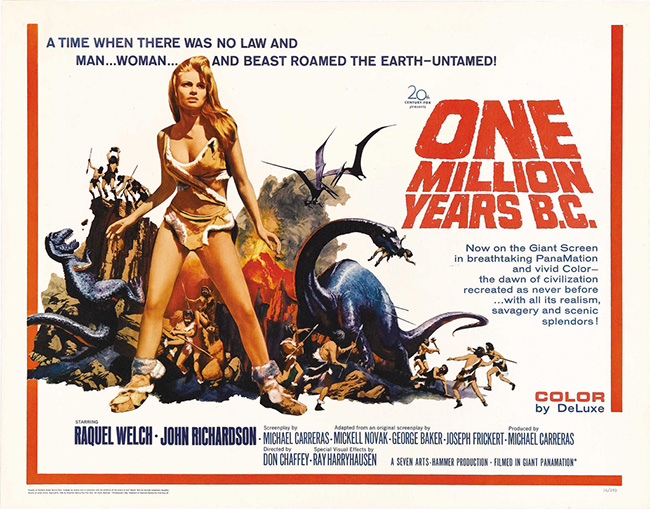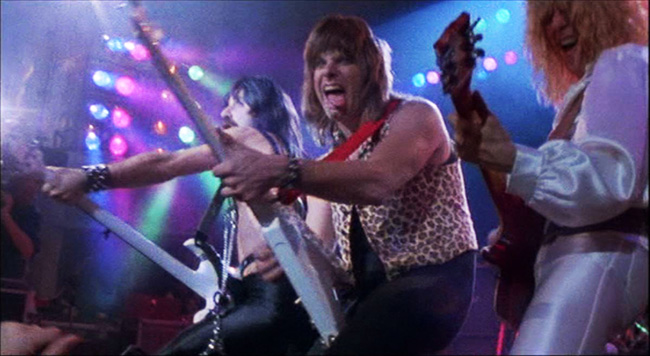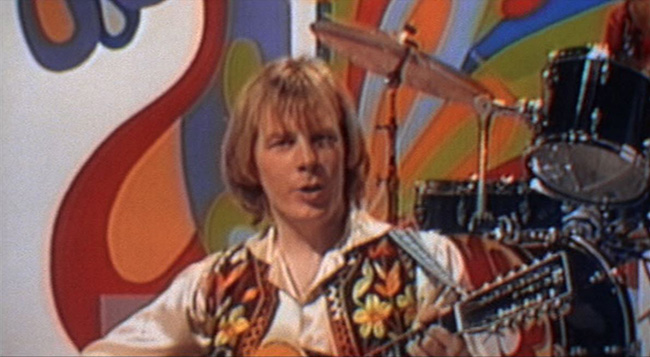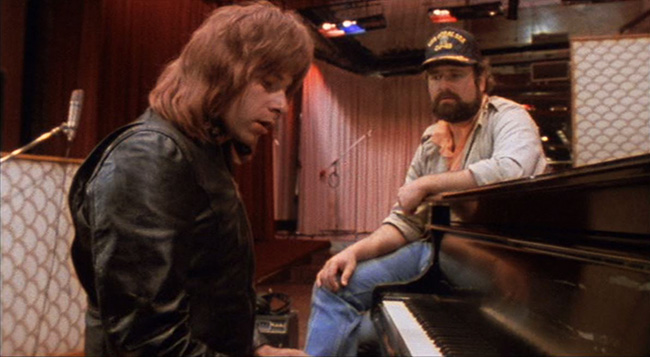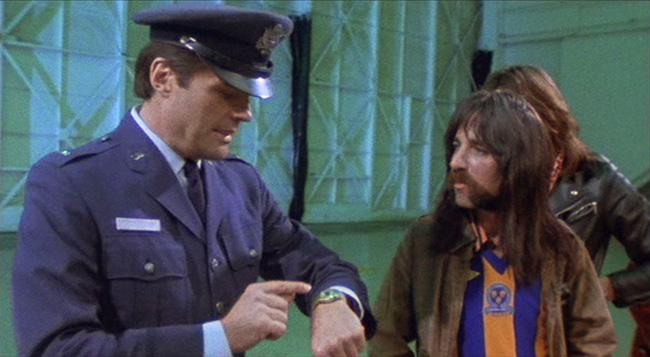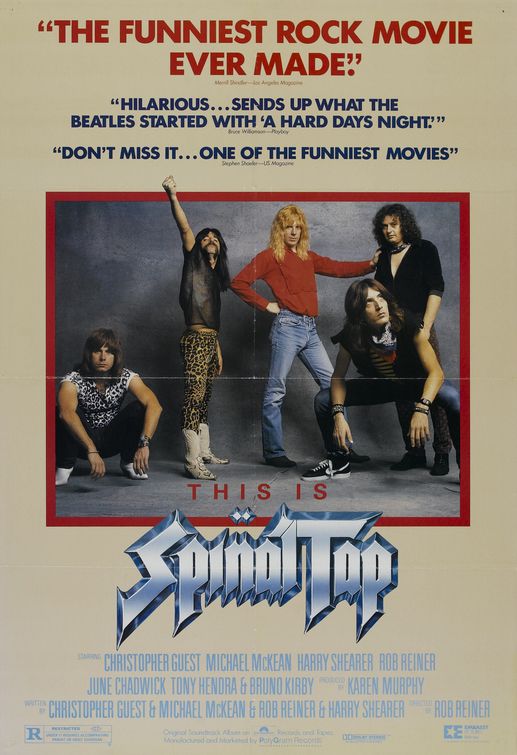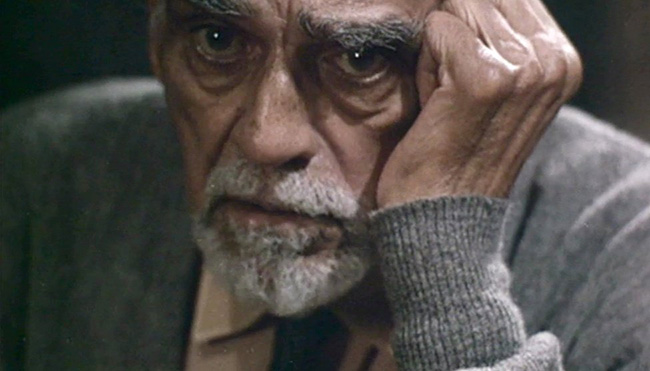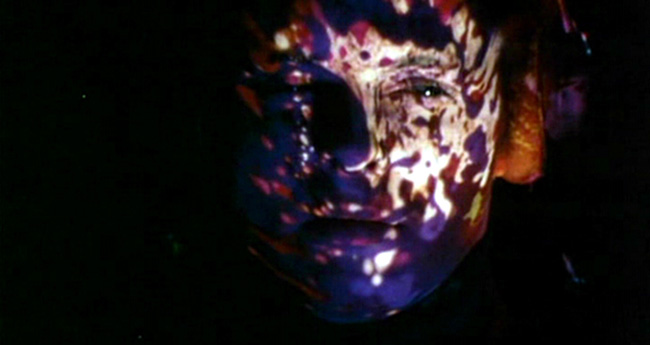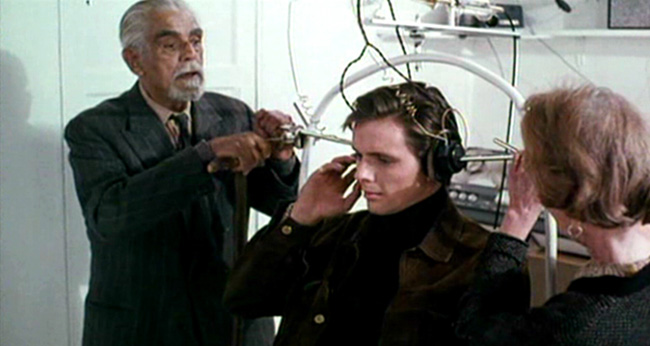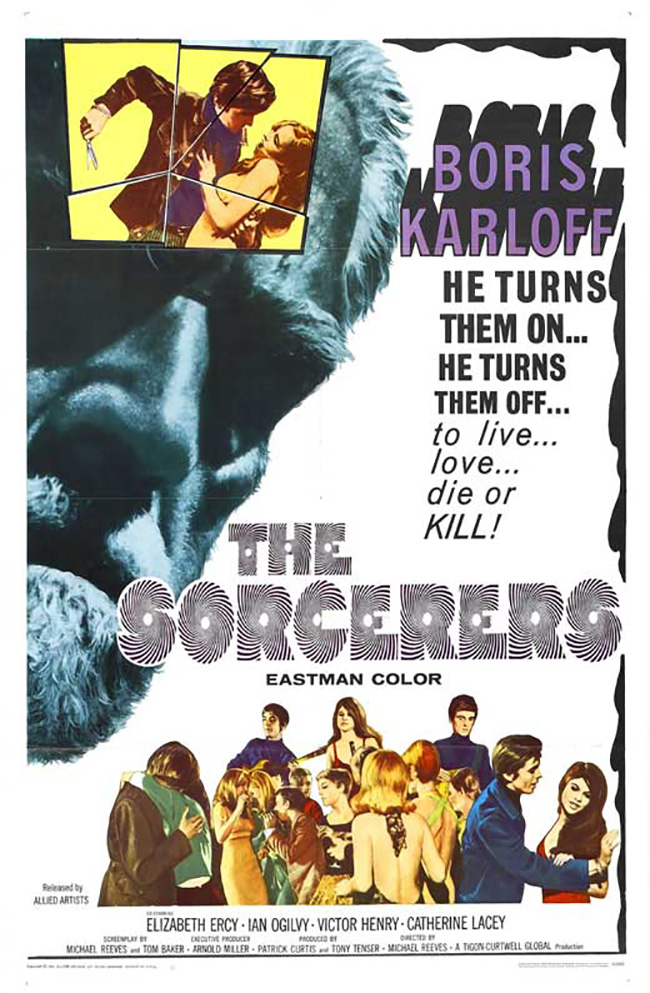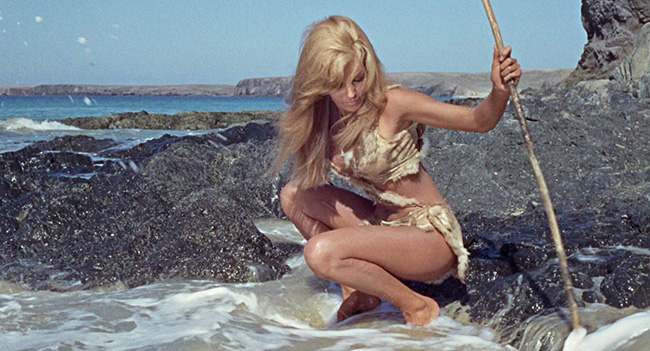
The new Kino Blu-ray of One Million Years B.C. (1966) is to be welcomed with applause for a number of reasons. The film has become a beloved genre staple over the decades – hasn’t everyone caught a little bit of it on TV on some random Saturday afternoon? – but it’s also a benchmark film for both fans of special effects artist Ray Harryhausen and Hammer Films. Its poster, with Raquel Welch showing off her physique in a ragged hide bikini, is one of the most iconic promotional images of the decade. Yet despite its cult status many times over, it’s been woefully underserved on home video. The U.S. DVD provided only the U.S. cut, which is nine minutes shorter than the international version. This is significant because among the deleted footage is a fair chunk of Harryhausen’s stop motion animation, rightly regarded as precious among fans, considering how laborious an undertaking stop motion is. To gain the full version, fans such as myself had to import the U.K. DVD, which was non-anamorphic. To rectify the situation, Kino generously presents the film in a two-disc Blu-ray package, with the first presenting the 100 minute international version in high definition, and the second offering the U.S. cut, both from a 4K restoration. You can safely throw out the old U.K. DVD, as the extras have been ported over (interviews with Welch and Harryhausen), and a few new ones added, including an interview with co-star (and Bond Girl) Martine Beswick, and an audio commentary from Video Watchdog‘s Tim Lucas. This is the ultimate dinosaur movie of the pre-Jurassic Park era, and it’s been treated lovingly.
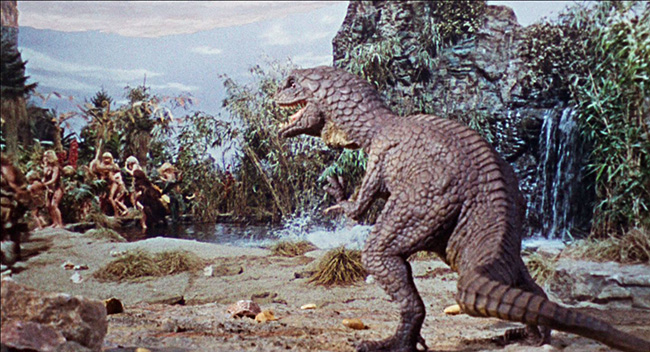
An allosaurus attacks the Shell Tribe.
One Million Years BC was conceived by Hammer exec (and studio scion) Michael Carreras, who, despite the success of the company in Gothic horror films, had a greater fondness for pulpy fantasy: consider his later directorial effort The Lost Continent (1968), or his direct follow-up to One Million Years B.C., the camp classic Slave Girls (aka Prehistoric Women, 1967). Carreras conceived of a remake of the Victor Mature-starring B-movie One Million B.C. (1940), in which cavemen battle alligators and iguanas blown-up and dressed up to be dinosaurs; it is a film most notable for how often its giant-reptile footage was subsequently pilfered for other pictures. He wanted two things for this picture: (1) quality special effects, and (2) a divine Hammer Glamour beauty to match the marketing behemoth that was Ursula Andress in She (1965). In fact, Andress was offered the part but turned it down – though her She co-star, John Richardson, accepted the role of the male lead. To fill Andress’ shoes, American distributor 20th Century Fox loaned out one of their contract starlets, Welch, who had just appeared in another notable fantasy film of the 60’s, Fantastic Voyage (1966). Welch didn’t want to do it, but she had no choice, so she gritted her teeth and hoped the movie would be quickly forgotten. But the assembled elements constitute the smartest decisions Carreras ever made in his career at Hammer. He enlisted a special effects artist at the top of his game; collaborated with Harryhausen on the story and agreed to hire one of Harryhausen’s recommended directors, Don Chaffey (Jason and the Argonauts); top-billed an up-and-coming sex symbol, and shot not in the usual Hammer locations but at the exotic, far-flung, and primordial-looking Canary Islands (Lanzarote, Grand Canary, and Tenerife). As a result, Carreras made a movie that doesn’t look like Hammer, but a big-studio fantasy spectacle. He had an international hit on his hands, one that he would never be able to properly recreate, though how he tried…Slave Girls, When Dinosaurs Ruled the Earth (1970), and Creatures the World Forgot (1971) all featured scantily-clad cave-people, but the particular magic of One Million Years B.C. was missing.
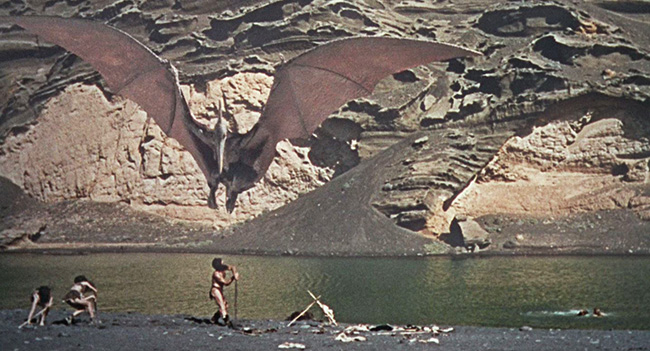
A pteranodon on the hunt for food.
Let’s face it, this is a thoroughly absurd film, and you can argue it never should have worked. Richardson plays Tumak, a member of the Rock People tribe, who are all brunettes. A dispute has him exiled, and he braves this barren prehistoric world until he encounters the Shell People, who are all blondes (!). The Shell People live at the edge of the ocean, and the beautiful Luana (Welch) shows him how to use spears for fishing; he applies this skill to help defend their home from an allosaurus. Eventually he is turned away from the Shell People too, and returns to his tribe with Loana to teach them how to use spears. But turmoil erupts again, ended only by an exploding volcano that tears the landscape apart. One accuracy is that no one speaks English, though this means Carreras limits his script to dialogue along the lines of: “Tumak! Loana!” Welch is, of course, perfectly coiffed and made up, and there are plenty of anachronistic dinosaurs (from various eras, and seldom in their appropriate habitats) to break up the long scenes of desert wandering and intense gazes. Notably, the first dinosaur glimpsed is a real, live iguana, towering over Tumak in the style of the original 1940’s film. This has always come across as sacrilege to Harryhausen fans like myself, who expect only meticulous hand-made models. He has explained his thinking many times. In An Animated Life he writes, “At the time I felt that by using real creatures we might convince the viewers that all of what they were about to see was indeed real…On reflection, it was an irrational mistake.” The iguana is followed by another real animal, a giant tarantula, but thankfully he then presents us with a fabulous array of his own dinosaurs, fulfilling the prehistoric fantasy that he had begun in his parents’ house when he was just a young King Kong fan, assembling a never-completed stop-motion film to be called Evolution. (Apart from a brief sequence for Irwin Allen’s 1956 documentary The Animal World, this was his first studio-financed project to feature dinosaurs. He followed it up with another one, The Valley of Gwangi, from a story by his mentor, Willis O’Brien.)

Publicity photo of Raquel Welch as Loana.
The anachronisms don’t really matter. No one is going to look to a caveman vs. dinos picture like One Million Years B.C. as a serious depiction of the prehistoric world. But it is executed with such a straight face, and so much skill, that it has the sort of weight an epic fantasy film needs. The score by Hammer veteran Philip Martell (The Curse of the Mummy’s Tomb, The Evil of Frankenstein, etc.) is memorably ominous and sometimes approaches the avant-garde, using experimental primitive sounds for the Rock Tribe. Cinematographer Wilkie Cooper (The 7th Voyage of Sinbad, Jason and the Argonauts, Mysterious Island), also recommended by Harryhausen, makes the most of the location shooting, conjuring a landscape that really stuck in the mind and lit the imagination of this writer when he was a very young viewer. There is not much for the actors to do but shout each other’s names and poke at monsters with sticks, but nonetheless Chaffey gets committed performances from Richardson, Welch, Percy Herbert (The Bridge on the River Kwai), Robert Brown (later “M” in the Bond films of the 80’s), and Martine Beswick (From Russia with Love, Thunderball), who gets a surprisingly physical, and torch-swinging, fight scene with Welch. Harryhausen is in top form too, providing his most exciting moments with the battle with the allosaurus (when the creature leaps suddenly into the frame, it’s genuinely thrilling) and the famous abduction of Welch by a pteranodon that just wants to feeds its children. When Harryhausen’s dinos expire, they collapse onto the ground with labored breath, a convincing bladder installed in the models to simulate panting. The final breaths overpower the soundtrack, sufficiently conjuring the King Kong-like pathos Harryhausen always sought. None of this could ever be real, but he makes it real enough; that’s what escapism is all about.
